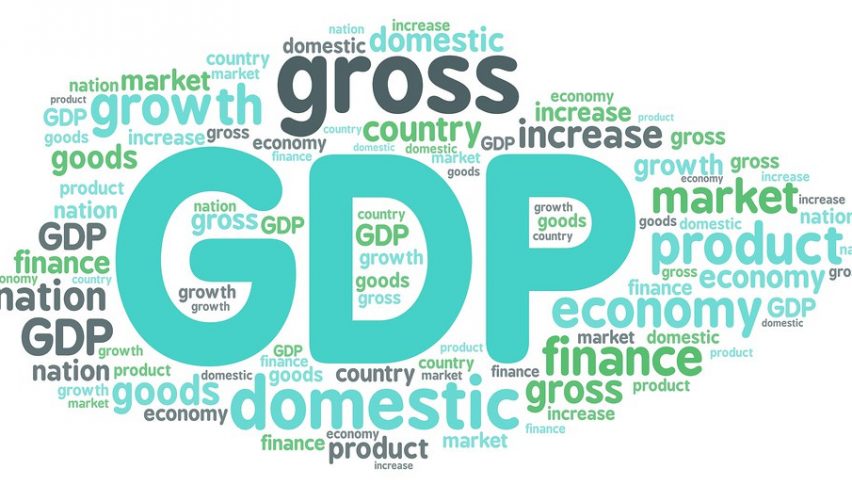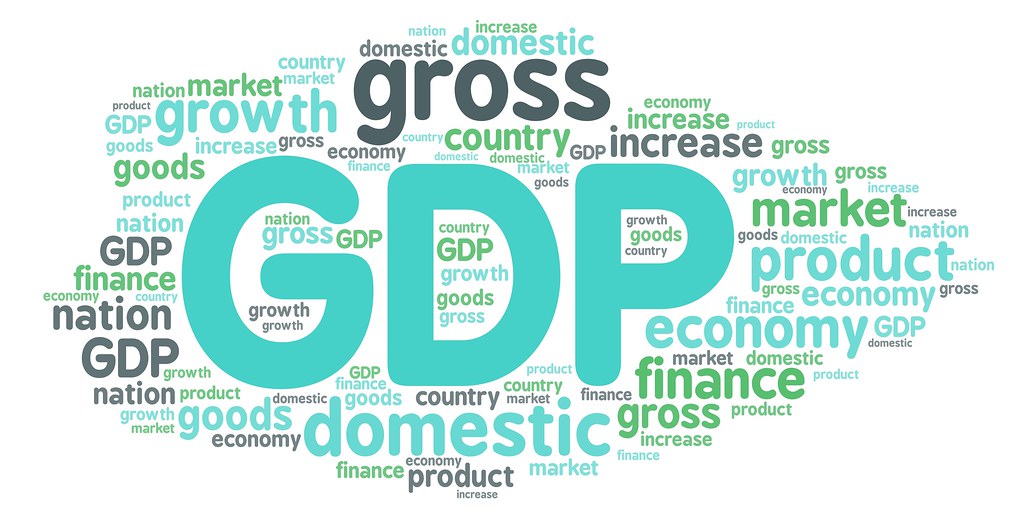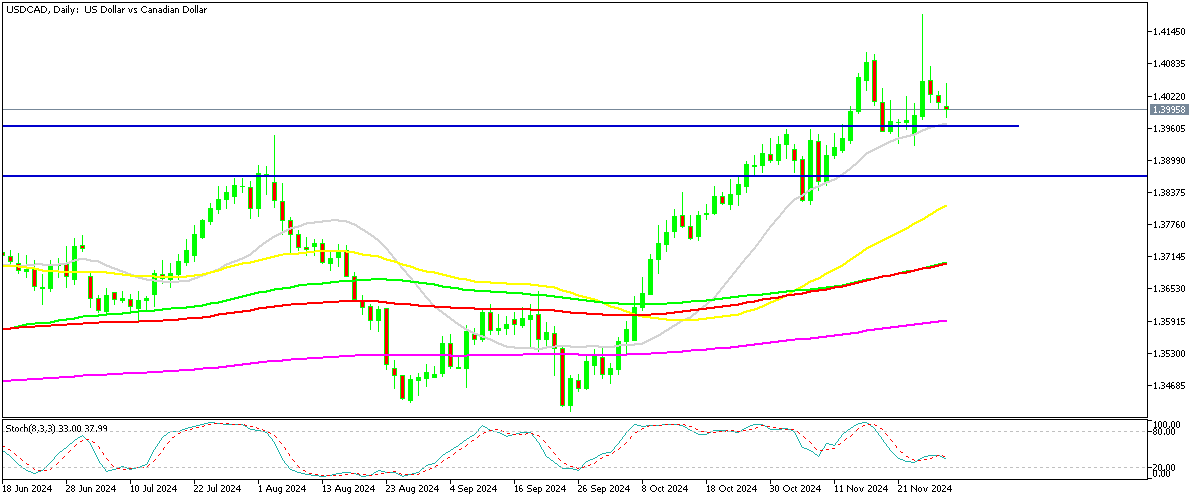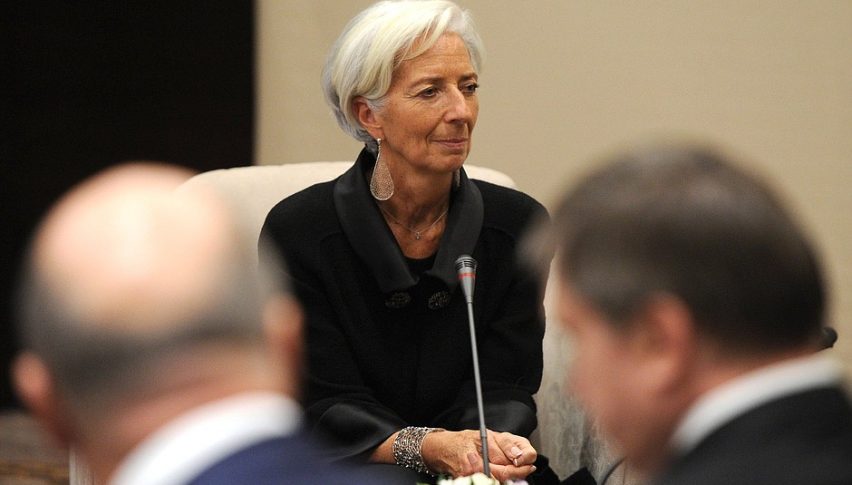USDCAD Stops at 1.40 As Lower Canada GDP Implies 50 BPS BOC Rate Cut
USD/CAD Retreated 2 cents lower from the top after the surge on Monday, but it has closed the week at 1.40 which has turned into a support.

USD/CAD Retreated 2 cents lower from the top after the surge on Monday, but it has closed the week at 1.40 which seems to have turned into a support.

Canadian Economy Struggles with Sluggish Growth
The latest GDP report on Friday painted a concerning picture of Canada’s economic performance, highlighting ongoing stagnation. While the annualized growth rate for Q1 matched projections at 1.0%, the details revealed deeper challenges. The GDP saw minimal growth of just 0.1% in September following stagnation in August, with October’s preliminary estimate also at a mere 0.1%.
More troubling is the contraction in GDP per capita, which fell by -0.4% in Q3, continuing a trend seen throughout 2023 and 2024. Rapid population growth exacerbates the issue, masking the economy’s underlying weakness. Despite a population increase of over one million, job creation remains lackluster, with only 94,900 new positions added in the past year, as revealed by September payroll data.
Impact of Elevated Interest Rates
The Bank of Canada’s overnight rate of 3.75% is proving to be a significant strain. A cooling property market underscores the broader economic impact of these high rates. With stagnating growth and a population-driven GDP illusion, calls for rate cuts have intensified. However, the market remains divided over whether the Bank of Canada will opt for a 25 or 50 basis point cut. While a 25 bps cut remains the favored outcome, its probability has slipped to 61%, with some leaning toward a more aggressive 50 bps reduction.
USD/CAD Chart Daily – The 20 SMA Keeping the Price Supported
The USD/CAD pair initially reacted to the GDP report with a 30-pip surge but later retraced those gains, closing the week just below the critical 1.40 mark. So, the price action in this forex pair reflects investor uncertainty as they weigh the implications of Canada’s sluggish economic growth and the Bank of Canada’s next steps.
Canada GDP Report for Q3
- Q2 Data (Annualized and Quarterly Figures):
- Annualized growth: +2.1%.
- Quarterly growth: +0.3% (down from +0.5% prior).
- Implicit price index: +0.6% (compared to +1.1% prior).
- Sector Performance (Quarterly):
- Government spending: +1.1%.
- Household spending: +0.9%.
- Business investment in machinery and equipment: -7.8%.
- Housing investment: +0.8%, marking its first expansion since Q3 2023.
- Corporate income: -1.1%.
- Monthly Data:
- September GDP:
- Growth: +0.1% (below the +0.3% expected, advance estimate was +0.3%).
- August GDP: Previously reported as 0.0%.
- Sector details:
- Services: +0.5%.
- Goods: -0.4%.
- Manufacturing: -0.3% (an improvement from -1.2% prior, but still marking the fourth consecutive decline).
- October GDP (Advance Reading):
- Growth: +0.1%.
- September GDP:
USD/CAD Live Chart
- Check out our free forex signals
- Follow the top economic events on FX Leaders economic calendar
- Trade better, discover more Forex Trading Strategies
- Open a FREE Trading Account





